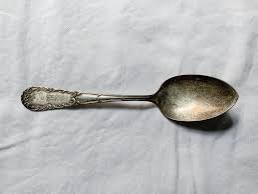Why does Silver tarnish?
- Katie Woollett
- Sep 15, 2024
- 2 min read
Updated: Sep 16, 2024
Silver is a precious metal that has been used for jewellery, coins, and other objects for centuries. It is shiny, malleable, and durable, but it is also prone to tarnishing.
Tarnishing is a natural process that occurs when silver comes into contact with substances that contain sulfur, such as air, water, sweat, perfume, salt water and food. Sulfur atoms bond with silver atoms and form silver sulfide, which is a black or brown compound that covers the surface of the silver. This changes the appearance and color of the silver, making it look less attractive and valuable.
Tarnishing does not damage the silver itself, but only affects the outermost layer. It can be prevented by storing silver in a dry and cool place, away from sunlight and moisture. Surprisingly, it can also be avoided by wearing silver jewellery regularly, as the friction from the skin helps to keep it clean and shiny.
In the first image you can see what happens to silver over time.
Tarnish can be removed by using various methods that restore the original shine and colour of the silver. Some people use a silver dip solution, which is not always recommended but if you are not using it too often I think it works well. You put your jewellery in the solution for 5 minutes and then wash it a warm soapy water. An old toothbrush is a great help to get into tiny areas. (Please note, never put pearls or gemstones into silver dip).
Another way to clean your silver is to use a special polishing cloth or paste, that contains abrasives and chemicals that dissolve the silver sulfide. You rub the cloth on your silver piece until the silver becomes shiny. Again I recommend finishing with a rinse in warm soapy water.
Sometimes jewellers use the tarnishing process to enhance their design.(see image 3 above.). A chemical called liver of sulphur or platinol is used to speed up the tarnishing process to blacken parts or all of the the piece
As a jewellery maker I have specialized tools and techniques for polishing even the most tarnished silver and I’m more than happy to bring your silver back to life! You can contact me at kwoollett@originalstrands.com or bring your jewellery into my studio in Marlay Park Courtyard.






Comments